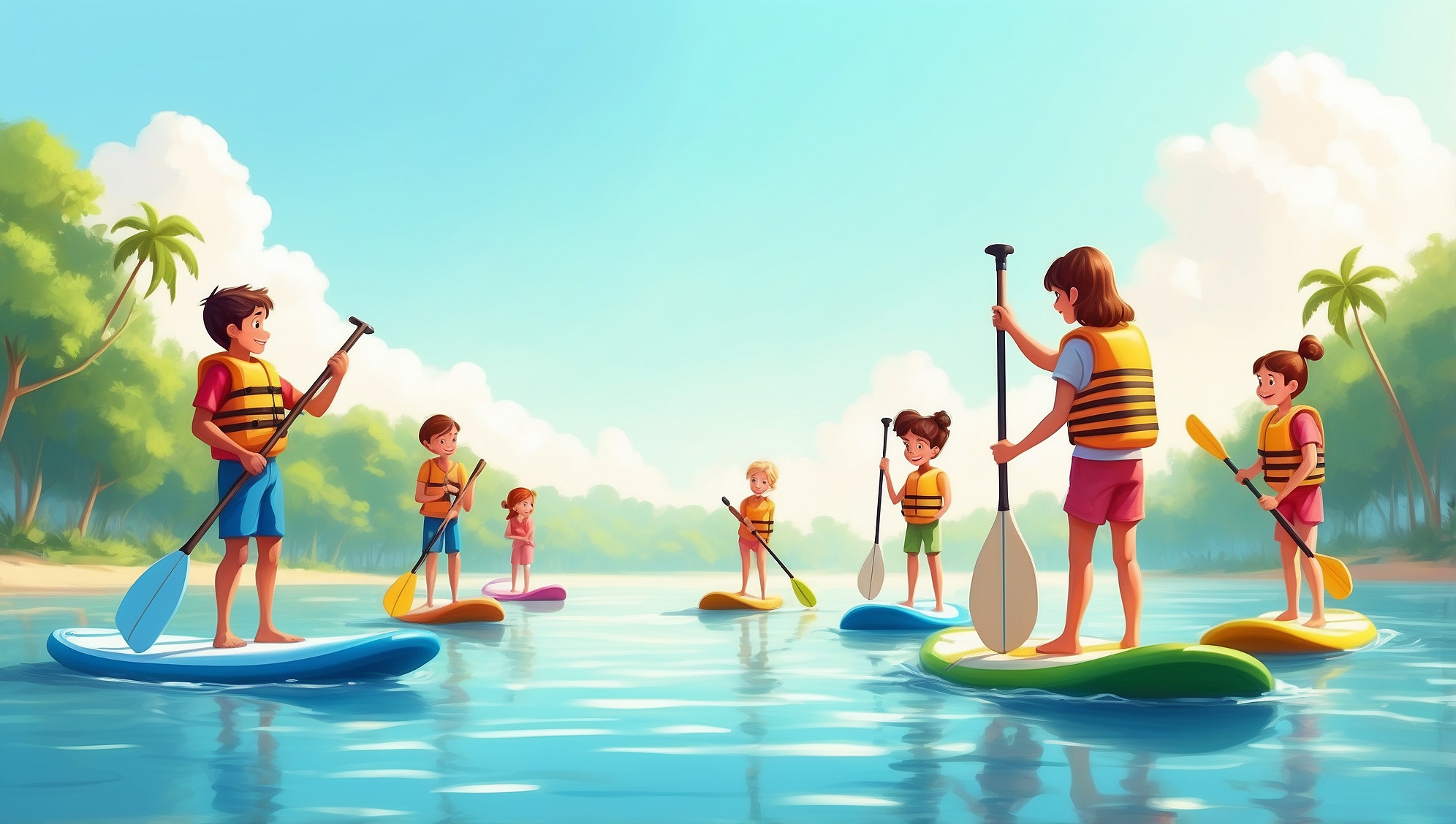Paddleboarding is a water sport that combines balance, strength, and relaxation, offering an engaging activity for participants of all skill levels. Whether you’re gliding across calm lakes or tackling gentle waves, paddleboarding suits adventurers of all ages and fitness levels.
What is Paddleboarding?
Paddleboarding, often called stand-up paddleboarding (SUP), involves standing on a sturdy board and propelling yourself through water using a long paddle. It originated as a variation of surfing and has evolved into a popular pastime worldwide.
Why Paddleboarding is Perfect for Everyone
- Low-impact workout: Paddleboarding provides a full-body workout that’s gentle on joints, making it suitable for kids, adults, and seniors.
- Accessibility: Most boards are designed for stability, making it beginner-friendly.
- Customizable pace: Whether seeking a leisurely paddle or an intense workout, you can adjust the activity to match your preferences.
Getting Started with Paddleboarding
1. Essential Gear
- Paddleboard: Choose a board based on your weight, height, and intended use (flat water, yoga, or surfing).
- Paddle: Adjustable paddles are ideal for finding the perfect height.
- Personal Flotation Device (PFD): Required in many areas for safety.
- Leash: Keeps your board tethered to you if you fall.
- Proper clothing: Quick-drying or waterproof materials are ideal.
2. Finding the Right Location
- Flat water: Lakes, ponds, and calm bays are best for beginners.
- Mild waves: Intermediate paddlers can try coastal waters with gentle surf.
- Scenic routes: Rivers and estuaries provide unique views and wildlife sightings.
How to Paddleboard
- Start on calm water: Begin in shallow, flat water to gain confidence.
- Mount your board: Position the board in knee-deep water, kneel at the center, and slowly stand up.
- Balance your weight: Keep feet shoulder-width apart and knees slightly bent.
- Hold the paddle correctly: Place one hand on the top handle and the other midway down the shaft.
- Engage your core: Use your core muscles to maintain balance and power each stroke.
- Paddle efficiently: Alternate sides to move straight, paddling 4–5 strokes on each side before switching.
Tips for Beginners
- Start with shorter sessions to build endurance and balance.
- Practice falling safely by aiming for shallow water and avoiding shallow obstacles.
- Stay close to the shore until you feel confident in open water.
Popular Paddleboarding Activities
- Recreational paddling: Ideal for calm exploration and relaxation.
- SUP yoga: Combine paddleboarding with yoga for a balance and flexibility challenge.
- Fishing: Paddleboards equipped with rod holders offer a peaceful fishing experience.
- Racing: Competitive paddlers can test their speed on SUP courses.
- Family outings: Large boards can accommodate kids or even pets.
Health Benefits of Paddleboarding
- Improved balance: Strengthens stabilizing muscles and enhances coordination.
- Core workout: Engages abdominal and back muscles for a strong core.
- Cardiovascular health: Provides an excellent aerobic workout.
- Stress reduction: Gliding across water promotes mindfulness and relaxation.
Safety Tips
- Check weather conditions before heading out.
- Wear a PFD and leash at all times.
- Stay hydrated and apply sunscreen for protection.
- Inform someone of your location and expected return time.
Advanced Techniques
- Pivot turns: Shift weight to the tail and use quick paddle strokes for sharp turns.
- Wave riding: For those near the ocean, catching small waves can be a thrilling experience.
- Endurance paddling: Longer routes on calm water challenge stamina.
Choosing Your First Board
- Inflatable vs. rigid boards: Inflatable boards are portable and easy to store, while rigid boards offer better performance.
- All-around boards: Perfect for beginners and versatile for various activities.
- Specialized boards: Tailored for surfing, yoga, or racing.
Maintaining Your Gear
- Rinse your board and paddle with fresh water after each use.
- Store in a cool, dry place away from direct sunlight.
- Regularly inspect your equipment for damage.
Joining a Paddleboarding Community
Paddleboarding groups and classes can enhance your skills and connect you with fellow enthusiasts. Many locations offer rental services and guided tours, providing opportunities to learn and explore in a supportive environment.
Conclusion
Paddleboarding offers a versatile activity suitable for relaxation, fitness, or adventure. Its accessibility and benefits make it a perfect choice for individuals and families seeking a fun and rewarding water experience.


